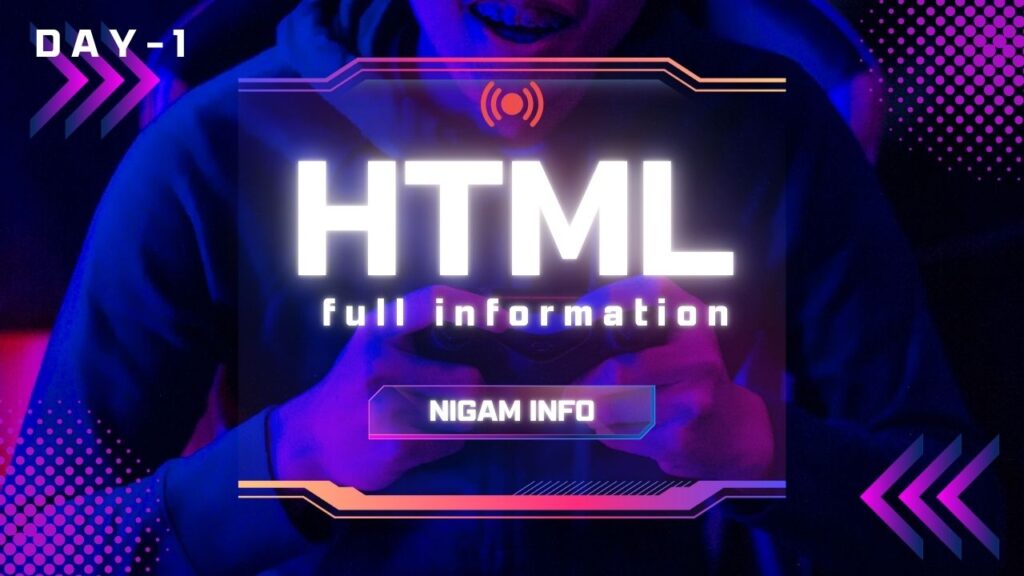Front-end development is an essential aspect of web development that focuses on creating the parts of websites or web applications that users interact with directly. It’s often described as the “client-side” of web development because it involves everything the user sees and experiences in their browser. If you’ve ever used a website.
what you see—buttons, images, text, navigation bars—is the result of front-end development. The goal of front-end development is to make websites functional, attractive, and user-friendly. In this article, we will explore the key concepts of front-end development, the technologies involved, and the process behind building a modern front-end.
What is Front-End Development -?

At its core, front-end development refers to the process of building the user-facing portion of a website or web application. Front-end developers are responsible for implementing the visual elements of a site and ensuring a seamless user experience (UX). This means that front-end developers must not only have an understanding of design principles but also technical skills to make the design functional in a browser.
Front-end development involves three primary tasks :-
- Building Structure – Using HTML to define the structure and layout of a webpage.
- Styling and Design – Applying styles using CSS to make the webpage visually appealing and functional.
- Interactivity – Adding functionality with JavaScript to enable user interactions, such as clicking buttons or submitting forms.
Key Technologies Used in Front-End Development :-
The core technologies used by front-end developers are HTML, CSS, and JavaScript. Let’s take a closer look at each one.
take a closer look at each one.
- HTML (Hypertext Markup Language)
HTML is the foundation of every webpage. It provides the structure and content for the site. HTML consists of a series of elements or tags, such as headings, paragraphs, images, and links, that describe the various parts of the webpage.
For example:
doct.html
<h1>Welcome to My Website</h1>
<p>This is a simple paragraph of text.</p>
<a href=”https://nigaminfo.com”>Click here</a>
With HTML, developers can organize content in a structured manner, but it doesn’t deal with design or behavior. That’s where CSS and JavaScript come in.
- CSS (Cascading Style Sheets)
CSS is responsible for styling the HTML elements on a webpage. It controls aspects like layout, colors, fonts, spacing, and positioning. CSS allows developers to separate content (HTML) from presentation (styling), making it easier to maintain and update websites.
For example:
css1.css
body {
font-family: Arial, sans-serif;
background-color: #f0f0f0;
}
h1 {
color: #333;
}
CSS can also be used for creating responsive designs, meaning that websites can adjust their layout depending on the size of the user’s screen (desktop, tablet, mobile). This is done using media queries, which allow developers to apply different styles based on device characteristics.
- JavaScript
JavaScript is the programming language that enables interactivity and dynamic content on webpages. Unlike HTML and CSS, which are static, JavaScript allows websites to respond to user actions like clicks, scrolling, and form submissions. JavaScript can manipulate HTML and CSS, enabling dynamic changes without needing to reload the entire page.
For example:
javascript
CopyEdit
document.getElementById(“myButton”).onclick = function() {
alert(“Button clicked!”);
}
JavaScript is also crucial for handling tasks like form validation, animations, and making AJAX requests to load new content without refreshing the page.
Modern Tools and Frameworks for Front-End Development
In addition to HTML, CSS, and JavaScript, front-end development has evolved with the introduction of tools and frameworks that streamline the development process. These tools can help with everything from design to code management. Some of the most popular tools include:
- CSS Frameworks – These are prewritten libraries of CSS code that provide ready-to-use styling components like buttons, navigation bars, and grids. Popular frameworks like Bootstrap and Tailwind CSS save time and effort by offering consistent and responsive design patterns.
- JavaScript Frameworks and Libraries – JavaScript frameworks like React, Angular, and Vue.js are built to simplify and organize the process of building complex applications. React, for example, allows developers to build reusable components and efficiently manage the state of an application.
- Version Control (Git) – Git is a version control system that helps developers track changes to their code, collaborate with other developers, and manage different versions of their projects. Platforms like GitHub allow developers to share their work and contribute to open-source projects.
- Task Runners and Module Bundlers – Tools like Webpack, Gulp, and Grunt are used to automate tasks like minification (reducing file sizes), compilation (converting Sass to CSS), and bundling multiple JavaScript files into one file for better performance.
The Process of Front-End Development
- Planning and Design – Before any coding begins, front-end developers work with designers or use design tools like Adobe XD or Figma to create a visual representation of the website. This stage involves wireframes, mockups, and prototypes that outline the website’s layout and functionality.
- Building the Structure – Developers begin by creating the skeleton of the webpage using HTML. This includes defining the layout, headings, text, and images that will appear on the site.
- Styling the Website – Once the structure is in place, developers use CSS to style the website. This includes setting colors, fonts, and the overall layout. Responsive design is incorporated here to ensure the site looks great on all screen sizes.
- Adding Interactivity – With JavaScript, developers add interactive elements like buttons, forms, and animations. This step makes the website dynamic and responsive to user input.
- Testing and Debugging – Testing is crucial to ensure that the website works correctly across different browsers and devices. Front-end developers use browser developer tools to debug issues and optimize performance.
- Deployment – After completing the development and testing phases, the website is deployed to a server so that users can access it. Tools like Netlify, Vercel, and GitHub Pages are often used for hosting front-end applications.
Conclusion
Front-end development is a dynamic and ever-evolving field that requires a mix of design knowledge, technical skills, and an eye for detail. By mastering HTML, CSS, JavaScript, and modern development tools, front-end developers can create visually appealing, responsive, and interactive websites and applications. As the web continues to evolve, front-end developers must stay updated on new technologies and best practices to create the best possible user experience. Whether you’re building a simple landing page or a complex web application, front-end development plays a vital role in shaping how users interact with the digital world.






























